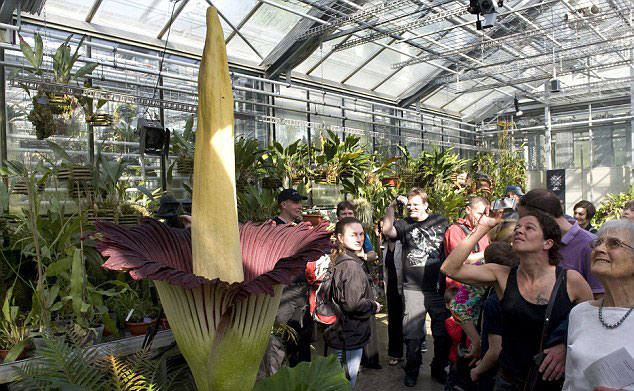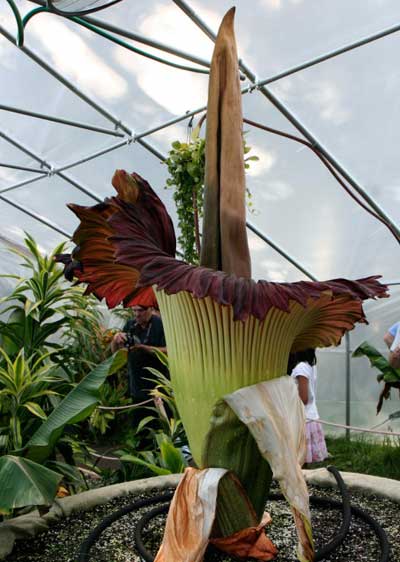A specimen of the well-known “corpse flower”, with its particular nauseating smell, has reached two metres high in Australia. Gardeners at Mount Lofty Botanic Garden, about 18km from Adelaide, jubilantly announced a few weeks ago the long-awaited flowering of the extremely rare Amorphophallus titanum “Titan Arum” (more commonly known as “corpse flower”).
Mount Lofty Botanic Garden
First opened in 1977, the crescent-shaped Mount Lofty Botanic Garden is situated on 97 hectares on the eastern slopes of Mount Lofty in the Adelaide Hills east of Adelaide in South Australia. The cooler, wetter location suits plants from temperate climates which are difficult to grow on the Adelaide Plains.
Thousands of visitors have flocked to the gardens to discover the species. According to one of the coordinators of gardeners at Mount Lofty, “its flowering is weird because the plant is to difficult to grow”. That’s why only 80 specimens have growed worlwide in the last 30 year.
The plant, whose seed was donated in 2006, has grown 20 centimetres every day on average. the “corpse flower”, which hails from the Sumatran rainforest, takes 10 years to grow and can reach a height of three metres. Although the Adelaide specimen is just under two metres.
Amorphophallus titanum “Titan Arum”
The king of all growable flowers, Titan Arum produces a gigantic inflorescence with an unforgettable size, shape and smell. Amorphophallus titanum ”Titan Arum” is native solely to western Sumatra, where it grows in openings in rainforests on limestone hills. The plant is cultivated by botanic gardens and private collectors around the world.
The truth is that the smell, similar to dead bodies, is part of the plant’s survival mechanisms in the wild and is much more powerful at night. But it hasn’t deterred interest with a long line of onlookers, winding around the gardens gate.
Experts have credited the smell to a combination of: “Dimethyl trisulfide, isovaleric acid, dimethyl disulfide, benzyl alcohol, indole, and trimethylamine”.

















